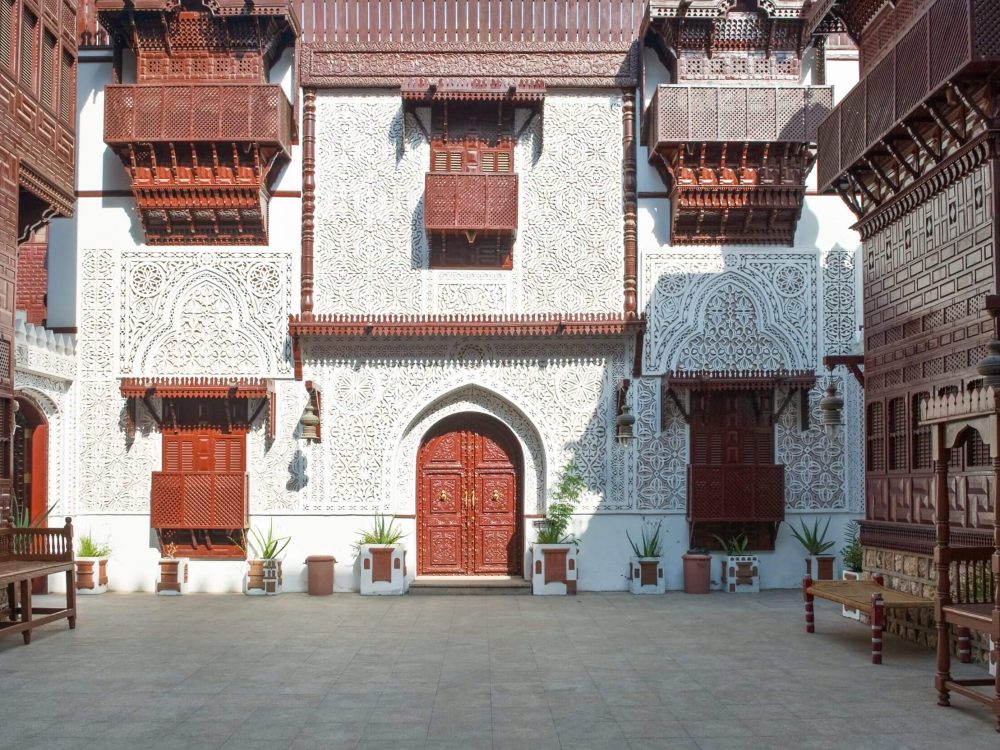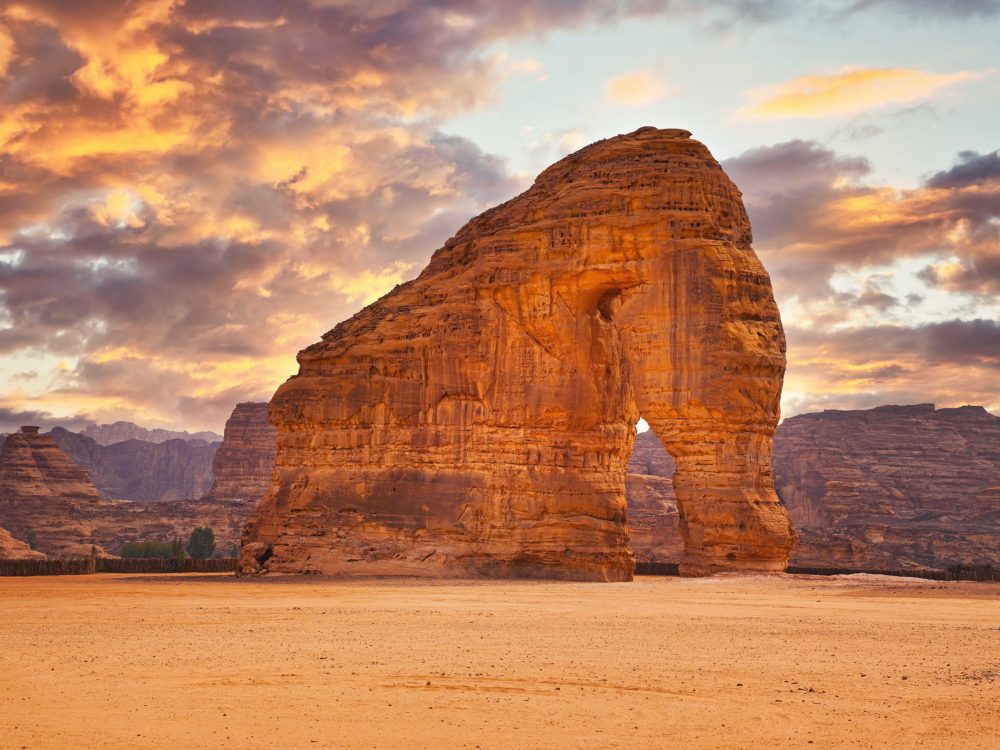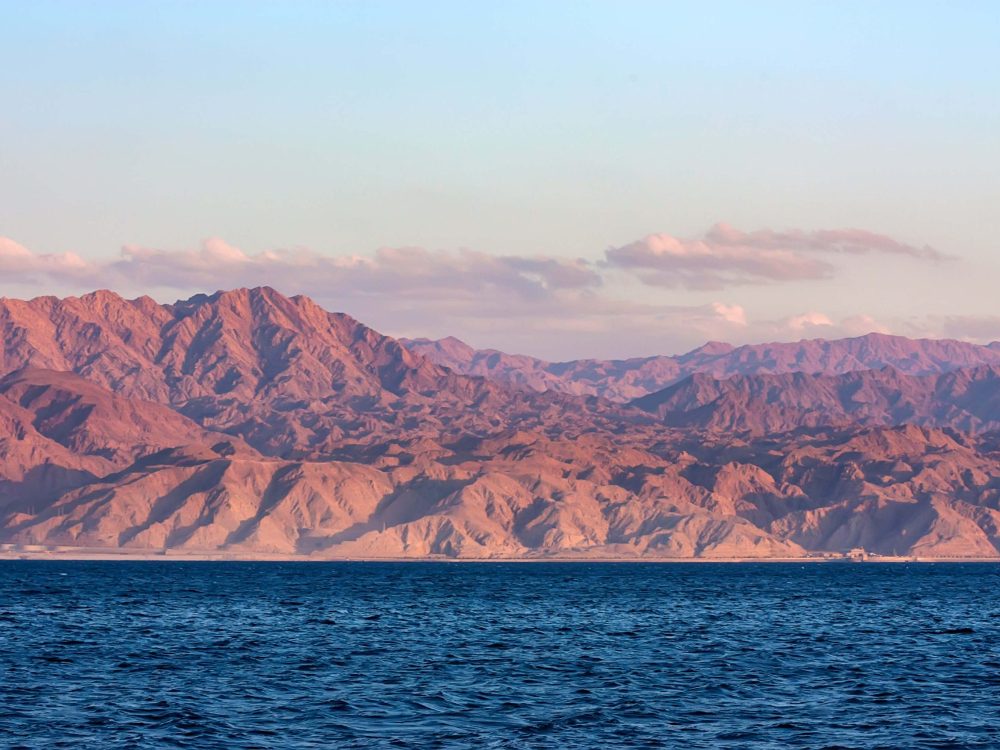Desert Civilizations & Coastal Cultures:
Saudi Arabia Through a Heritage Lens
9 Days | 8 Nights Tour
This immersive academic journey through northwestern Saudi Arabia invites students to explore one of the world’s most culturally rich and historically layered regions. Centered around the theme of Culture and Heritage, the program blends experiential learning with guided exploration, uncovering the stories of ancient civilizations, traditional lifeways, and contemporary efforts in heritage preservation. From the rock-carved tombs of the Nabataeans in AlUla to the maritime history of the Red Sea coast, students engage directly with archaeological sites, cultural landmarks, and local experts. Designed for those studying history, anthropology, Middle Eastern studies, or cultural preservation, the program fosters critical thinking, intercultural awareness, and a deeper appreciation for Saudi Arabia’s evolving identity on the global heritage stage.
3-4 Star Hotels
Coach
Year-Round




What's Included
- Exploration of Hegra (Madain Salih) – Visit Saudi Arabia’s first UNESCO World Heritage Site and study its connection to the Nabataean civilization through in-depth guided interpretation.
- Hands-on Study at Dadan and Jabal Ikmah – Examine ancient inscriptions, tombs, and early scripts at sites often referred to as the “open-air libraries” of Arabia.
- Walking Tour of AlUla Old Town – Discover centuries of trade, religion, and community life in this preserved mudbrick settlement.
- Architecture & Identity at Maraya Hall – Analyze how modern design honors traditional landscapes in the world’s largest mirrored building.
- Oasis Heritage Trail Walk – Observe sustainable water systems and agriculture that have supported life in arid environments for millennia.
- Maritime Heritage Experiences on the Red Sea – Participate in optional snorkeling and marine ecology sessions while learning about ancient Red Sea trade routes and coastal communities.
- Interactive Workshops on Traditional Practices – Explore palm weaving, storytelling, or cooking techniques that have been passed down through generations.
- Student-Led Reflections and Capstone Presentations – Encourage synthesis of learning through creative projects, group discussions, and personal reflection.
- Cultural Geography & Landscape Journaling – Track how terrain, climate, and natural formations have influenced heritage, settlement, and identity.
- Ethical Tourism & Conservation Discussions – Understand how modern Saudi Arabia is balancing development with preservation through site visits and expert dialogues.
- Compressive sightseeing as outlined in the itinerary
- All transfers by private coach
- English-speaking drivers and guides
- Daily breakfast, three dinners, and two lunches
- Entrance fees to monuments as mentioned in the program
- Flight from Izmir to Ankara
The Experience
Students arrive at AlUla International Airport, where they’ll be met by their program coordinator and transferred to accommodation close to the heritage zone. After check-in, there will be a welcome orientation session to introduce the region’s historical significance, cultural themes, and the academic goals of the program.
Evening session:
Group discussion on “Why Study Saudi Heritage Now?” and an overview of AlUla’s transformation from historic crossroads to modern heritage hub.
After breakfast, begin a deep-dive cultural exploration with a visit to Hegra (Madain Salih), the Nabataean city and Saudi Arabia’s first UNESCO World Heritage Site. Students will study monumental tomb architecture, religious iconography, and inscriptions, comparing Hegra to Petra.
Continue to Maraya Concert Hall, a contemporary example of how modern design can reflect and respect heritage landscapes. Students will discuss architecture and symbolism in cultural memory.
The day concludes with a guided visit to AlUla Old Town, where traditional mudbrick houses and merchant routes tell stories of trade, pilgrimage, and social life.
Academic focus:
- Nabataean culture and its influence
- Adaptive reuse and heritage architecture
- Urban fabric of historic Arabian towns
Start with a guided exploration of Dadan, capital of the Dadanite and Lihyanite kingdoms. Students will investigate rock-cut tombs, royal inscriptions, and political development in pre-Islamic Arabia.
Then, visit Jabal Ikmah, an open-air archive of over 500 inscriptions in multiple scripts. A language and epigraphy session will explore what these writings reveal about identity, ritual, and literacy in early Arabia.
In the afternoon, walk the Oasis Heritage Trail, observing how traditional farming and water systems shaped community life.
Evening talk at Harrat Viewpoint:
“Land, Language, and Legacy: What the Landscape Tells Us About the People Who Lived Here.”
After breakfast, depart overland toward the Red Sea, passing through the Hejaz landscape historically used by traders and pilgrims.
During the transfer, students will stop for field journaling and group discussions on cultural geography and how environment shaped ancient mobility, belief systems, and settlement patterns.
Arrive by boat and check in and enjoy a reflective evening.
Explore the Red Sea’s heritage as a trade and cultural corridor. Optional snorkeling excursions provide a window into marine traditions, from historical fishing practices to environmental knowledge.
In the afternoon, participate in a workshop on oral history traditions of Red Sea coastal communities, led by a cultural guide or local expert (subject to availability).
Academic themes:
- Maritime heritage and regional trade
- The Red Sea in Islamic and pre-Islamic narratives
- Coastal life and indigenous knowledge systems
Today’s focus is on how heritage can be preserved in a modern luxury setting. Students will study sustainable resort development and its role in protecting both nature and intangible cultural traditions (music, food, craftsmanship).
Optional site-specific activities include heritage cooking demonstrations, palm weaving workshops, or mangrove ecology sessions (depending on availability).
Evening reflection:
“How do we balance luxury travel and heritage stewardship?”
Students can use this flexible day to develop a small capstone project or photo essay exploring one of the themes discussed: architectural storytelling, coastal trade routes, or intangible heritage.
Optional guided walks or boat excursions can deepen understanding of how geography continues to shape cultural narratives in the region.
Group evening: Capstone idea pitching and student-led reflections.
Enjoy the final full day with a balance of reflection and creative output. Students will present short capstone reflections, essays, or creative pieces that tie personal insights to academic themes.
Evening closure: Group sharing of key learnings and cultural impressions under the stars.
After breakfast and check-out, the group will transfer by speedboat and land vehicle to the Red Sea International Airport for onward travel.
Contact Us

